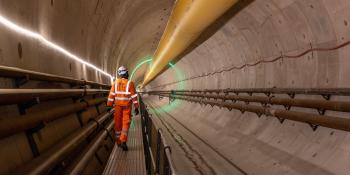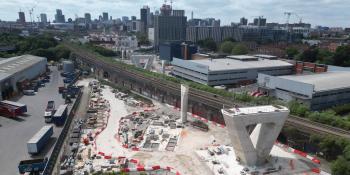A striking feature of HS2 is how historic railway sites are being repurposed for this 21st century project. In Birmingham the historic building at Curzon Street is being incorporated into the new terminal station being built at the north end of Phase One.
In west London, the carriage sheds at Old Oak Common have been demolished to make way for a major new interchange station.
And just up the road from Old Oak Common at Willesden, the Euroterminal site, itself formerly Willesden loco shed until its closure in 1965, now hosts HS2’s London Logistics Hub. The Euroterminal opened in 1994 as one of nine sites developed to handle Channel Tunnel intermodal traffic, but fell into disuse in 2005.
With excellent connections to the conventional railway, it made an ideal location for the logistics hub.
While HS2 will be an electric railway and thus a low-carbon mode of transport, the project recognises that it must do its utmost to minimise its carbon footprint during the construction phase. One aspect of this is avoiding lorry journeys where possible and moving material by rail, which also reduces the impact on local roads and thus on the communities surrounding HS2 sites.
The logistics hub at Willesden is describe…



